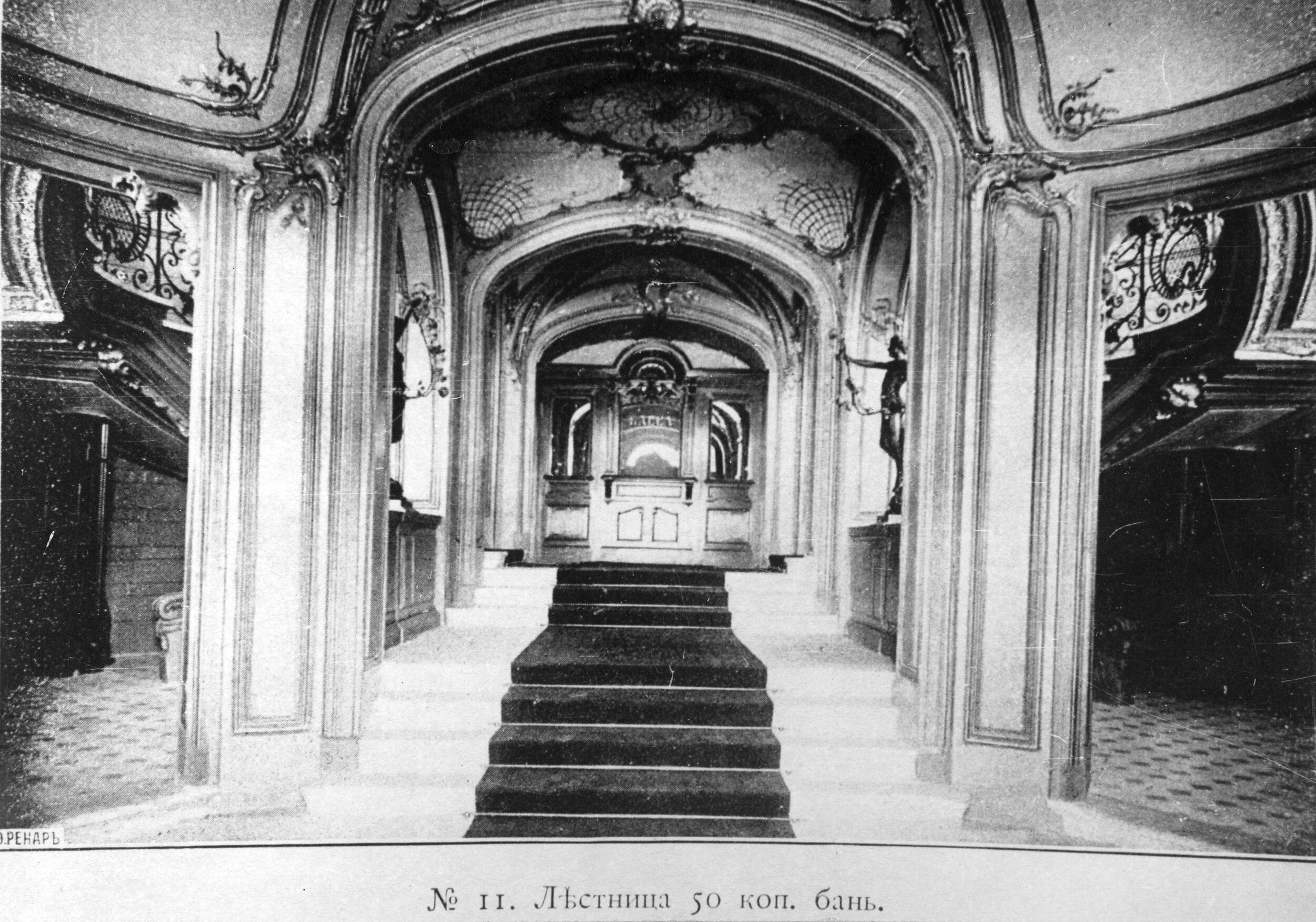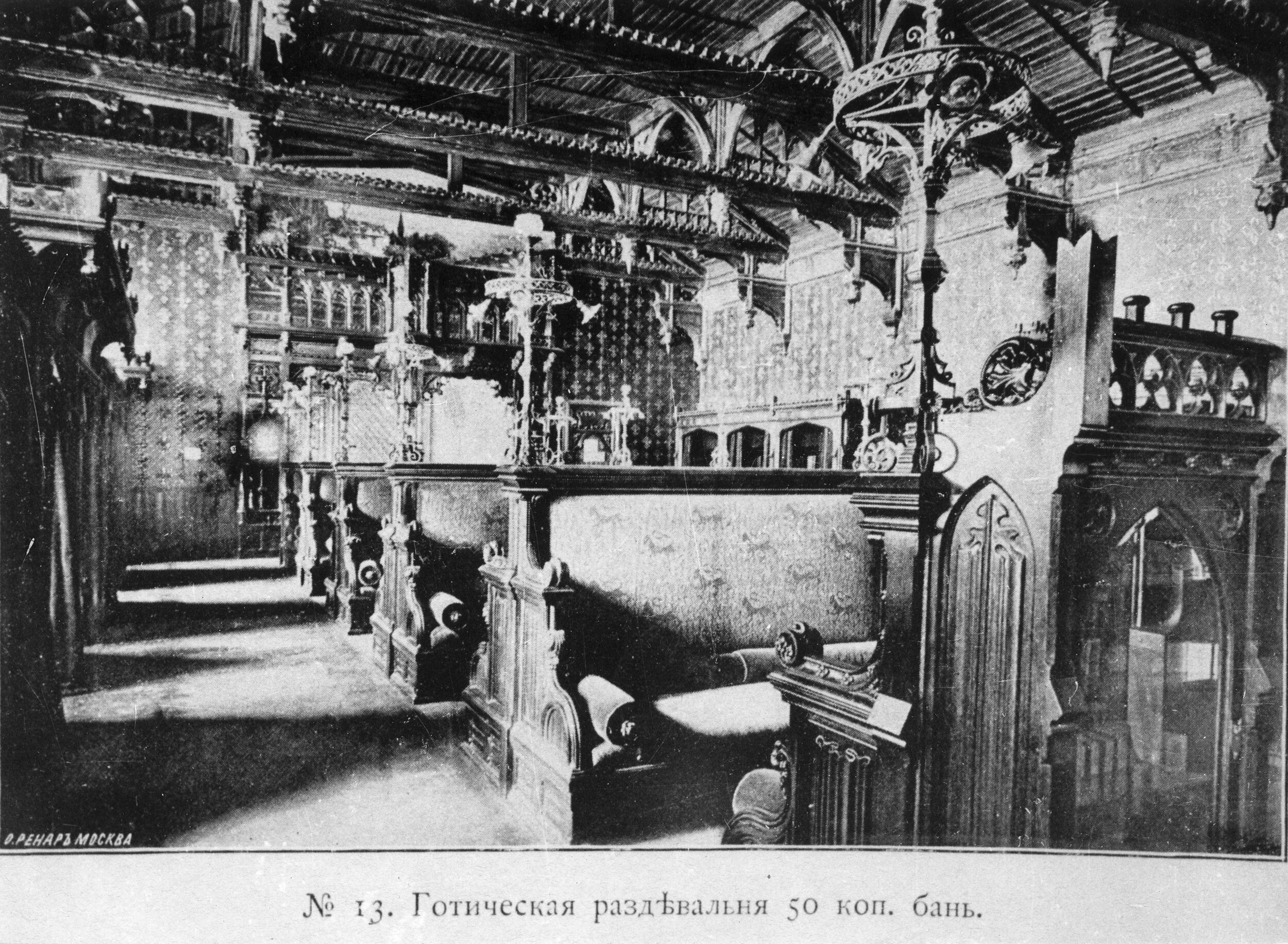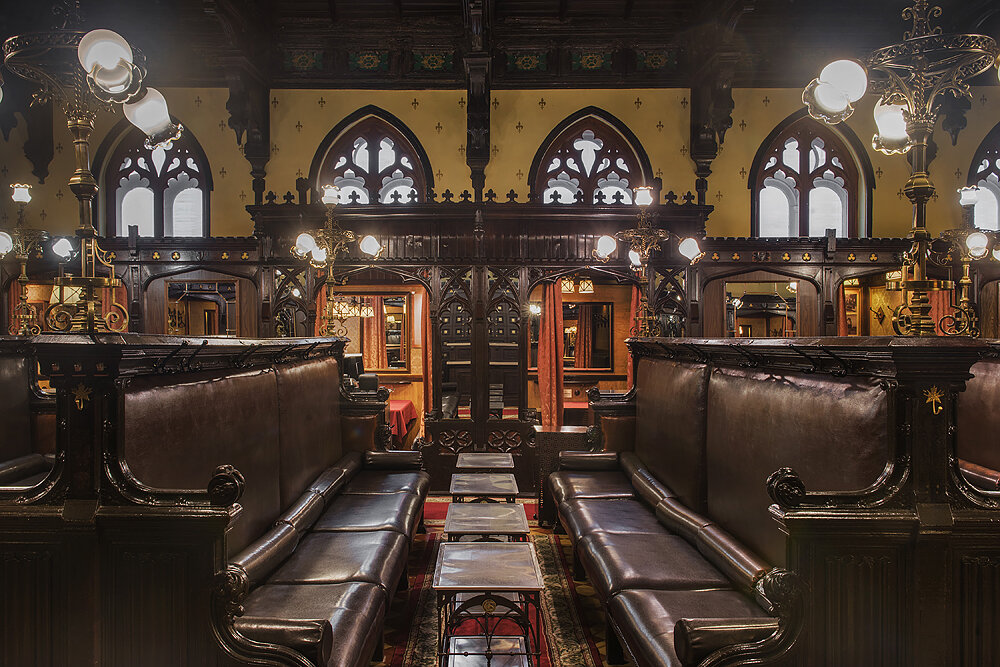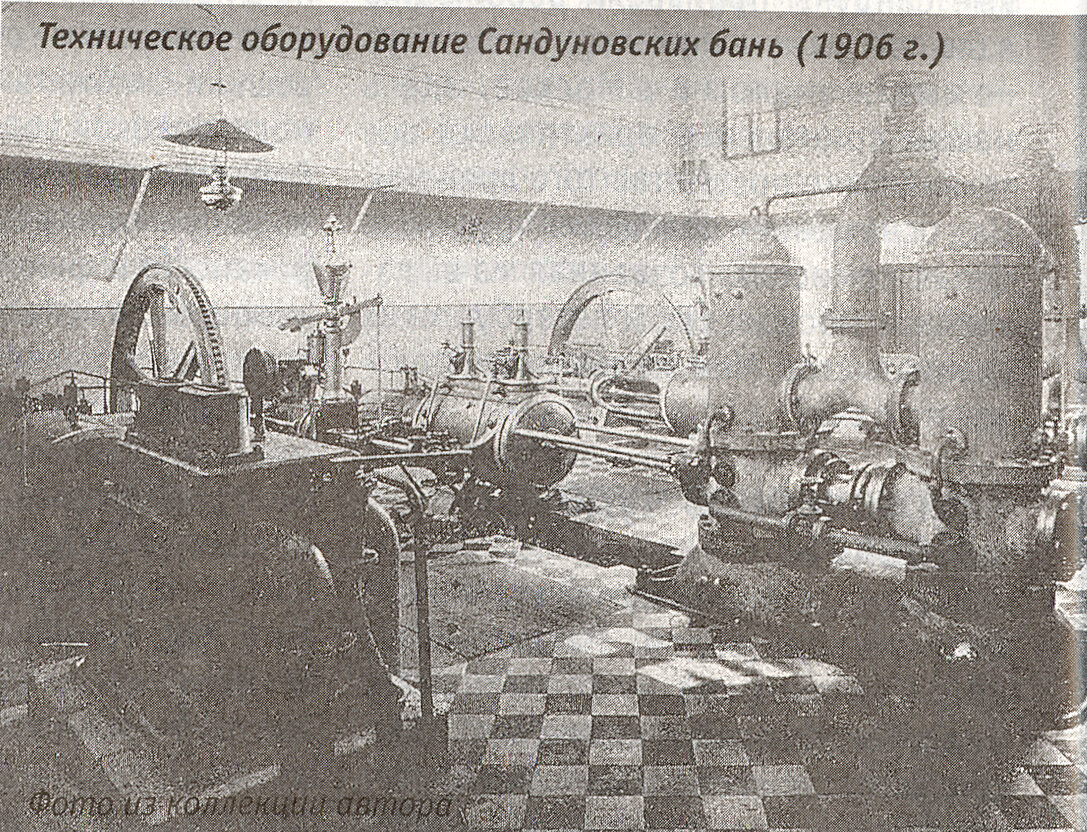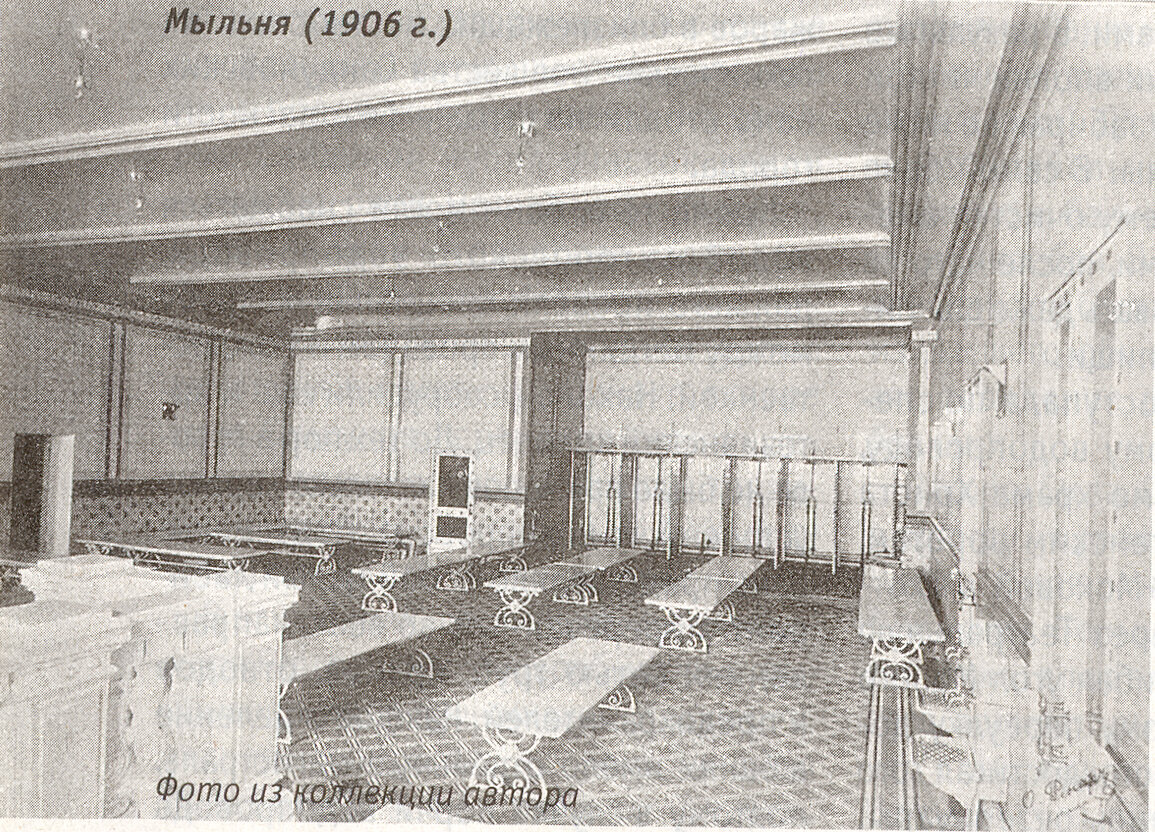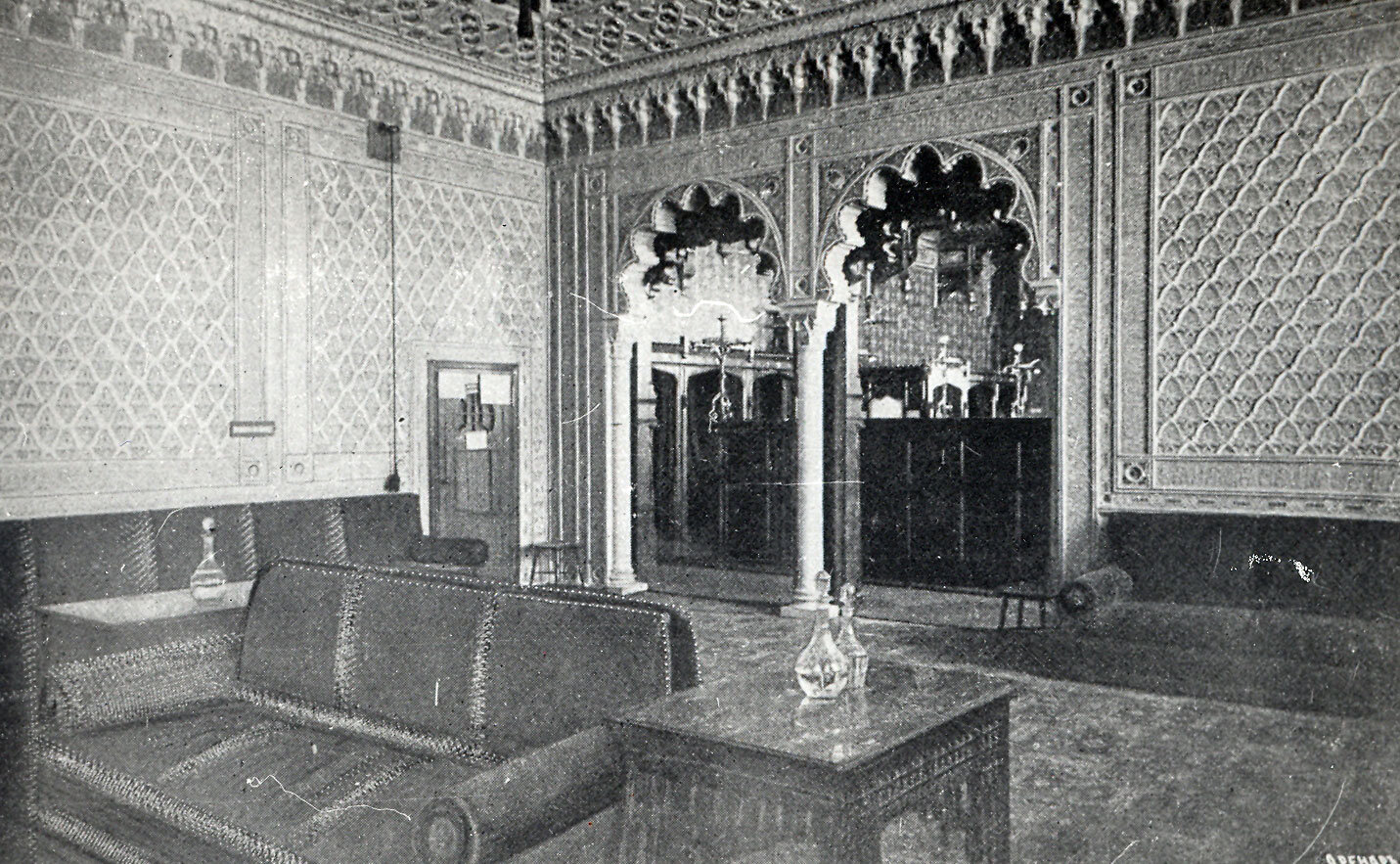"Twinned" Banyas: In conversation with Sanduny and The Bath House
Madeleine Cuckson discovers the links between Moscow’s most opulent bathhouse, and a new kid on the London spa block.
The entrance to the men's categories at the Sanduny bathhouse, Moscow. Image courtesy of Sanduny
Over its history, which stretches back approximately one thousand years, the Russian banya has served as an emblem of community, spirituality, politics and identity. With physical cleanliness serving as only one element of the experience, the banya dares to explore bathing as something profound, not merely physical.
Discussing both international and Russian banya practices today and historically, I spoke with the owners of two ‘twinned’ banyas - The Bath House Russian Banya, newly established in London’s Victoria, and the renowned Sanduny banya in Moscow, established over two hundred years ago.
Named after its founder, Sila Sandunov, the Imperial urban Sanduny banya opened in 1808 as a rather ordinary facility, but after its reconstruction in 1896, Sanduny was heralded for its international architectural influences. With allusions to the Imperial Roman thermae, Sanduny drew attention to the political theology that Moscow was the “Third Rome” and quickly became the banya of choice for Moscow’s high culture of the eighteenth and nineteenth centuries. Sanduny is testament to the banya as a hybrid of both luxury and practicality. In 1918, due to the collectivisation of urban banyas, Sanduny was renamed “State Banya No. 1”. The banya’s status as ‘No. 1’ certified Sanduny as the pre-eminent banya of Moscow, and it succeeded in surviving the two Russian Revolutions in 1917 and the fall of the communist regime in 1991.
Sila Nikolaevich Sandunov - Founder of Sanduny 1808. Image courtesy Sanduny.
Vera Firsanova - the heiress of the Sanduny Bath House and her husband Alexey Ganetsky - a businessman who constructed a new complex of the Sanduny Bath House (1894 -1896). Image courtesy Sanduny.
Sanduny is not only the oldest banya in Russia’s capital, but soon became known as an architectural and engineering miracle. The essence of Sanduny is that it is for everyone. Speaking to Yuriy Butorin, the deputy director at Sanduny, he explains that, “all of our guests are very different - from students to high-ranking politicians. The love for the bath has no gender or age”. Originally intended for the use of nobles, Sanduny is held in high esteem by Muscovites. Testament to its indomitable legacy is Sanduny’s survival of the great fire during Napoleon’s invasion in 1812, when almost all of Moscow burned down. In 1890, Sanduny was inherited by the daughter of millionaire Vera Firsanova, whose husband, Alexey Gonetsky, managed to convince his wife that Sanduny (which had become obsolete by that time) did not honor the Firsanovs’ surname. It should be rebuilt and turned into what Yuriy describes as, "a palace for baths, which Moscow has not yet seen”. In the hope of leaving its competitors far behind, Gonetsky went on a business trip to Europe. He visited many countries that had long-standing bathing traditions and studied not only the architecture of bath complexes, but also their technical structure. Upon arrival in Moscow, Gonetsky invited one of the best Viennese architects of the time, Boris Freudenberg, to work with him - building a multifaceted bathhouse that would facilitate washing for years to come.
Swimming pool of the highest male category (photo from the archive of 1896), Moscow. Images courtesy of Sanduny.
Modern view of the pool of the highest male category.
With the highest level of craftsmanship gracing every corner of Sanduny, Yuriy spoke on its stylistic influences: “The facades of the three-story palace were made with elements of Baroque, Rococo, Renaissance, Gothic, Classicism, and factory style”. The interiors of the highest priced band men’s section have been preserved since 1896 and the Gothic Hall can accommodate more than 120 people at a time; “it is a relaxation room, with huge oak benches, carved arched windows, high ceilings, mosaics - all this is more reminiscent of the interior decoration of the Catholic Church, after which this hall was created”. The Turkish hall is oriental in its style and is comparable to the interior of a Muslim mosque, the walls and ceilings of the hall are richly decorated with golden-green tiles; “you can see inscriptions made in Arabic script everywhere”. The swimming pool of the highest banded male category is “the pride of Sanduny”, made in the antique style of the ancient Roman baths. The walls of the most esteemed hall are decorated with marble, Greek columns are situated around the pool - above which is a mesmerizingly beautiful stained-glass ceiling that cascades light throughout the room.
Private banya at The Bath House, London.
The Bath House - Russian Banya was established by business partners Alex Lazarev and Robert Procope in London and has been open for over a year. Residing in a prestigious location behind Buckingham Palace, within a Grade II listed building, The Bath House is a luxury spa. As Sanduny’s twinned banya in London, The Bath House had a historically rich starting point. Alex at The Bath House, describes Sanduny as “our inspiration and ‘Godfather’. For Sanduny, promoting banya culture internationally is an important endeavour and they supported us tremendously when we decided to open. A lot of expertise and advice came from Sanduny. People learn about us through Sanduny and about them through The Bath House. It is a long-term relationship”. Looking around The Bath House, you notice intricate hand-made wall mosaics as well as beautiful antique basins: “Sanduny presented us with five antique bath basins that they used to have in their banyas. We restored them and now it is a fabulous detail”. These basins pay homage to an institution, craft and beloved national tradition that has existed for generations.
Sanduny's antique basins, now at The Bath House, London
It is hard to imagine that taking the banya from Russia to the UK can ever produce a completely authentic experience. Alex describes what changes in translation when you take the banya from Russia to the UK - “at The Bath House we combined a traditional Russian banya and treatments with a centuries-old history, parenie and soap massage, with a luxury contemporary spa, turning it into a whole new experience. Just like leading banyas in Russia, we have a full-service restaurant with a menu full of freshly cooked seasonal dishes inspired by the best recipes from the Russian cuisine”. What would be classed as an added luxury the UK banya is often common practice in a Russian banya, Alex explains: “as an homage to the rural banyas, we have an aromatic hay chamber, where you can relax and forget completely you are in the city centre”. Apparently, the key to The Bath House’s success in remaining truthful to its origins is that they, “don’t change the classic practices, only add new ones”.
Parilka room at The Bath House’s private banya, London
In The Bath House’s parilka room (where parenie is performed) you are greeted by male banshiks (attendants of the banya) who perform classic ‘parenie’ treatment, a process in which they manipulate the steam around you with veniks (made from dried leafy branches, often birch or oak). Alex explains, “unfortunately we can’t have female only staff on women’s days. Parenie is still delivered by male banshiks. There is no school of banshiks in the UK, and this is another direction of our work - we teach necessary skills to those who want to become banshiks. Hopefully, we will grow our own great female banshiks”. At Sanduny, female banshiks are part and parcel of going to a female only bathing session, but it is clear that a lack of female parenie trainers in the UK prevents their presence in The Bath House, at present. The role of banshiks or “steam masters”, as Sanduny refers to them, is a skilled and recognised practice. At Sanduny there is a ‘Russian Bath Festival - Steam masters Competition’ held yearly: which Yuriy states is “The main achievement and a very coveted reward for all bath attendants is the ‘Master of the Russian steam'’ cup - it is awarded to the winner of the annual Russian Bath Festival.
Nikita is one of The Bath House’s trained banshiks; “I’m originally from Estonia and the banya there is still a big part of everybody's life, every Friday it was a banya day. I always enjoyed it because in the winter you could just jump straight into the snow or river”. Each banya practice has their own method of getting all banshiks to the same standard, but a lot of the skill of being a banshik is learnt on the job, adapting to each client’s needs - “it’s funny, we do parenie every day, but the other day I went into the staff room and there were a couple of guys looking at parenie tutorials. So, you can always learn more - like with any job”.
The parenie process is extremely technical - there is a process of pressing hot veniks into the client's body to open up the pores, often accompanied by a distinctive rhythm to the hitting of veniks: “when there is a style and a sound to accompany it, it adds to the sensory enjoyment of banya”. Many unfamiliar with the banya wish to know what it is about the Russian baths that makes it so different to other saunas. Nikita uses the Finnish sauna to address this: “the room is about seventy to eighty degrees, but what you feel isn’t the temperature, it’s the humidity, that’s the difference with a Finnish sauna which might be ninety degrees but five percent humidity”. Unlike some saunas, “the point of the Russian banya is not to make you uncomfortable with the heat”.
“The first male category is a beloved place for veteran bathers, though simplistic in its interior, this steam room has a soft, “kind” steam which attracts its committed fans...”
What is evident from my discussions with both Sanduny and The Bath House, is that at their core is a genuine feeling of necessity to uphold age long practices. Speaking on the health benefits of the banya, Yuriy from Sanduny proclaims that “steam strengthens the cardiovascular system, brooms (veniks) have a beneficial effect on the skin, ‘broom massage’ removes toxins from the body, improves metabolic processes and is an excellent means of preventing and treating colds. The procedures that are presented in our bath complex are classic - so many generations of Russian people have steamed and washed themselves by steaming with brooms (oak, birch) and washing (soap massage). We only provide traditional practices that are understandable for a Russian person”.
Sanduny’s huge premises encompass a shoe shining service, beautician and laundry facilities; “The beauty salon offers a wide range of procedures: female and male cosmetology, manicure, pedicure, all types of massage, hardware cosmetology and, of course, face and body treatments. It is worth noting that after going in the steam room, the effectiveness of any cosmetic procedure increases several times, which is why most of our clients combine a visit to the bathhouse with a visit to a cosmetologist”. Within a two hour trip to Sanduny, you can send your linen to be thoroughly washed, ironed and have minor repairs made, all whilst you bathe. Though this element may appear to be a rather upmarket add-on, it has been a part of Sanduny’s practices for many years and is therefore a demonstration of the banya’s ability to encompass and support many aspects of a healthy lifestyle.
Archive and contemporary images of the Sanduny baths, from the Sanduny archive.
With Sanduny’s grandeur, it seems unfathomable that someone on a regular income could have attended these baths in the nineteenth century, however Yuriy is clear that, “while the prices for social categories (price bands) varied greatly, everyone could afford to go to the bathhouse. There were six categories in total: women at five, ten and thirty kopeks and men at five, ten and fifty kopeks (in the late 1890s, 1 rouble = 100 kopeks)”. Each kopek grade differed little in scenic decoration from the expensive grades, however, the premises were furnished more simply. At larger banyas like Sanduny, there is the capacity for different categories of bathing, with male and female options too. Yuriy states that the second highest male category is the perfect place for business meetings, due to its large common room and twelve private rooms. The first male category is a beloved place for veteran bathers, though simplistic in its interior, this steam room has a soft, “kind” steam which attracts its committed fans - Yuriy describes Sanduny’s steam as “special steam, the purity has been elevated to a cult”. Sanduny not only earned respect for its unique interiors and technical innovations which surprised many when the baths were opened after reconstruction, but it ignited the opening of “the second power plant in Moscow... in 1896 - electricity was unusual then”. Sanduny’s power plant also supplied the electricity for the coronation of Tsar Nikolai II in 1896.
“the role of the banya has inevitably changed and seeks to keep up with the modernising world...”
There are still misconceptions about the banya and saunas in general in the UK, mainly focused around licentiousness. Alex at The Bath House told us that, “unfortunately, when someone mentions that the banya is like a sauna with massage in this country, all the negative connotations come to mind. We saw it from various officials ahead of the opening and yet again explained to them the concept of the genuine banya”. The history of bath houses in the UK itself is rich, and The Bath House hopes that through recognising and drawing from this history - from the Russian Vapour Baths in Brick Lane to the oldest Turkish baths in London like Porchester Spa or Ironmonger Row Baths, that the banya will increasingly be recognised for its health benefits and unique experience. Another stereotype of the banya is that it is a place to consume copious amounts of alcohol — on the contrary, Alex affirms, “the banya is not the best place to have a lot of alcohol. We strongly advise guests to avoid alcohol before visiting banya, but enjoy it after your session when you relax in the lounge restaurant area”. Like most authentic banyas, The Bath House and Sanduny’s restaurants are an integral part of their bath complexes. At Sanduny, the restaurant has two halls, each of which has its own unique interior, serving dishes from traditional Russian and Central Asian (Uzbek).
With modern preferences of bathing in the home, the banya has had to have conviction in its belief that it cannot be replicated at home, where the community aspect is certainly lost. Yuriy has witnessed the recent Russian bath “revival”, and says that “Sanduny is doing its best to support this trend. In fact, the function of the bath as a place where you can wash has long been transformed into an entertainment and health-improving centre”, suggesting that the role of the banya has inevitably changed and seeks to keep up with the modernising world. It is intriguing why, when there are so many iterations of ‘sauna’ practice, from bathing in your home to going to a popular Turkish sauna, especially in the UK, people are still drawn to the banya, and the answer is very much embedded in tradition. In Russia, people often begin visiting the banya as children, as Alex from The Bath House explains, the banya, “has no age restrictions. Young people come to the banya to socialise and relax, as they grow up they return to the banya over and over”. In Russia, going to the banya on certain days is traditional, “The end of the year should be joyous and festive, free from worries and arguments. You forgive others, repay your debts, clean the house ‒ this way you will start the new year with a clean slate... for this reason many people traditionally go to the banya”. The banya does not seem like a tradition which could ever be shaken, it is in and of itself an emblem of Russia that is communicable internationally.
Additional sources used: Dement, Sidney Eric. ‘Architectural Details from Moscow's Sandunov Banyas in M.A. Bulgakov’s Master and Margarita’, The Slavic and East European Journal, vol. 60, no. 1 (2016): 87-105
About the author
Madeleine Cuckson is an English Literature and Drama graduate from The University of Manchester. Since finishing her studies, Madeleine has worked in both the post-production film and experiential design industry - private and charity sector. Madeleine has a specific interest in Russia’s arts and cultural history with a current focus on performance and the Ballets Russes.
Related event: WITHOUT THE BANYA WE WOULD PERISH
Wednesday, 3 February 2021, 6:00 pm GMT on Zoom
Ethan Pollock, professor of History and Slavic studies at Brown University and author of the first English-language history of the Russian bathhouse, tells the history of this ubiquitous and enduring institution. He explores the bathhouse's role in Russian identity, following public figures (from Catherine the Great to Rasputin to Putin), writers (such as Chekhov and Dostoevsky), foreigners (including Mark Twain and Casanova), and countless other men and women into the banya to discover the meanings they have found there.









